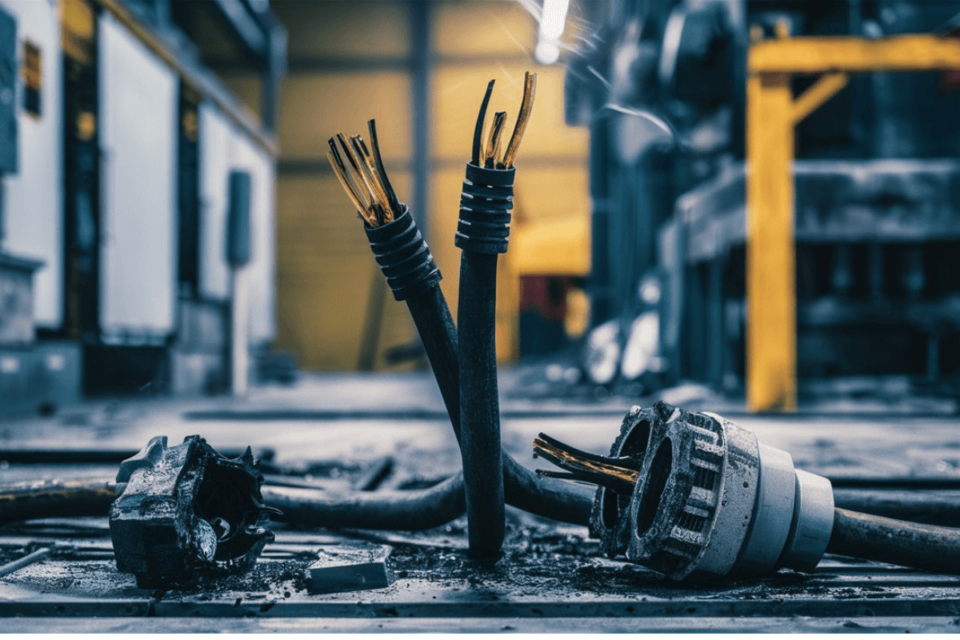The electrical cable industry is undergoing a revolutionary transformation, driven by advancements in technology, sustainability efforts, and the increasing demand for high-speed, reliable connectivity. From smart cables embedded with sensors to eco-friendly materials, the future of electrical cables is set to reshape industries and elevate the standards of power transmission. In this article, we dive into the trends and innovations shaping the market for electrical cables and explore how these changes will impact consumers, industries, and the environment.
Table of Contents
Key Innovations Shaping the Electrical Cable Industry
- Smart Cable Technology
Smart cables are equipped with embedded sensors and IoT connectivity, enabling real-time monitoring of cable performance, temperature, and wear. This innovation helps in predictive maintenance, reducing downtime, and preventing electrical failures in critical infrastructure like hospitals and data centers. - Eco-Friendly and Sustainable Materials
With the world moving toward greener practices, the cable industry is no exception. Manufacturers are increasingly using sustainable materials and biodegradable polymers to reduce environmental impact. Cables made from recycled or plant-based materials are emerging, offering eco-friendly alternatives for consumers and businesses. - High-Performance Fiber Optic Cables
As the demand for faster and more reliable internet connections grows, fiber optic cables are continuously evolving. Innovations in fiber technology enable greater data transmission speed and efficiency, supporting the future of 5G networks and beyond. - Heat-Resistant and Fire-Resistant Cables
Enhanced safety is a key driver in cable innovations. New materials and insulation technologies make cables more resistant to heat, chemicals, and fire, which is crucial for industries like construction, mining, and manufacturing where safety is paramount. - Lightweight and Flexible Cables
To address installation challenges in complex structures, lightweight and flexible cables are gaining popularity. These cables are easier to handle, install, and transport, making them an ideal choice for aerospace, automotive, and robotics applications.
Emerging Market Trends in Electrical Cables
- Increasing Adoption of Renewable Energy Cables
With a rise in renewable energy installations, there’s an increasing demand for specialized cables for solar panels, wind turbines, and other green energy sources. These cables are designed to withstand harsh outdoor conditions and offer high performance over time. - Growing Demand for High-Voltage Cables
High-voltage cables are becoming essential for efficient power distribution across long distances, especially for renewable energy sources located far from consumption centers. New designs in high-voltage cables reduce energy loss, making them more efficient and sustainable. - Focus on Cybersecurity for Smart Grids
As more smart cables and IoT-enabled systems enter the market, cybersecurity for power grids is critical. The industry is investing in encryption and secure data transmission to protect power infrastructure from cyber threats. - Rise of Digital Twins for Cable Management
Digital twins are virtual replicas of physical systems. By creating digital twins of cable networks, companies can simulate and analyze system performance, detect potential failures, and optimize efficiency in real time.
Conclusion
The future of electrical cables is an exciting landscape of innovation, promising not only enhanced functionality and efficiency but also a positive environmental impact. These trends reflect the industry’s response to global demands for sustainability, reliability, and connectivity. As new technologies continue to shape the market, the electrical cable industry will play an
FAQs
- What is the biggest innovation in electrical cables today?
The introduction of smart cable technology, with embedded sensors and IoT connectivity, is one of the most significant advancements, allowing real-time monitoring and predictive maintenance. - Are there eco-friendly options for electrical cables?
Yes, many manufacturers are developing cables from sustainable and recyclable materials, such as plant-based polymers and recycled metals. - How do fiber optic cables impact internet speed?
Fiber optic cables offer faster data transmission speeds and greater bandwidth than traditional cables, making them ideal for high-speed internet and 5G networks. - Why is fire resistance important for electrical cables?
Fire-resistant cables provide an additional layer of safety by preventing fires or slowing their spread, especially in environments prone to high temperatures. - What are renewable energy cables, and why are they essential?
Renewable energy cables are specialized for solar, wind, and other green energy installations, designed to withstand outdoor conditions and support long-term energy efficiency. - How does smart cable technology prevent electrical failures?
Smart cables can monitor performance, temperature, and wear, allowing for predictive maintenance that reduces downtime and prevents potential electrical failures. - What are digital twins, and how do they relate to cables?
Digital twins are virtual models of cable systems, allowing companies to monitor, analyze, and optimize performance in real time, which enhances efficiency and reliability. - Is cybersecurity important in the electrical cable industry?
Absolutely. As more cables become IoT-enabled, cybersecurity measures are critical to protect against data breaches and cyber threats targeting smart grids and other systems.

